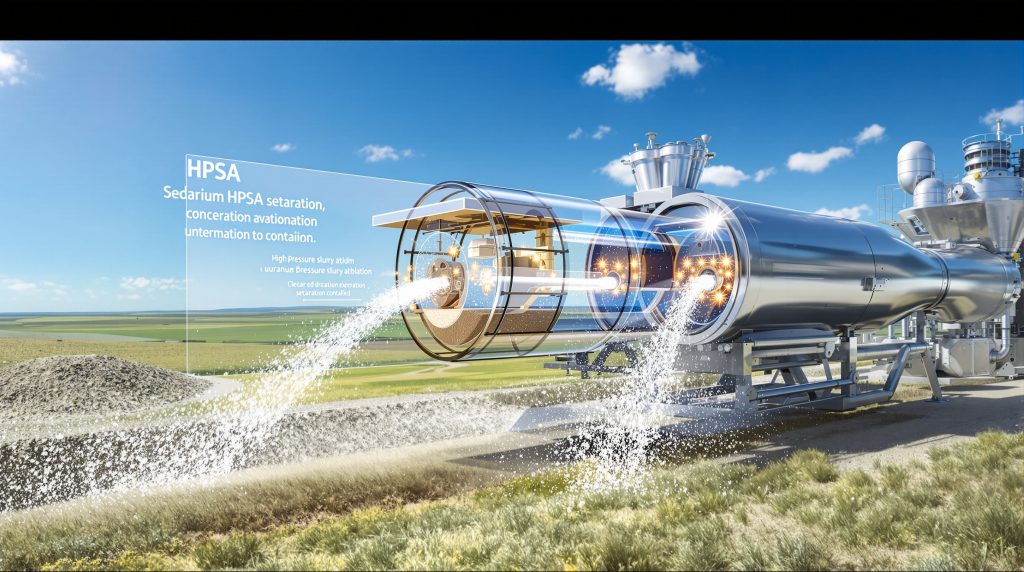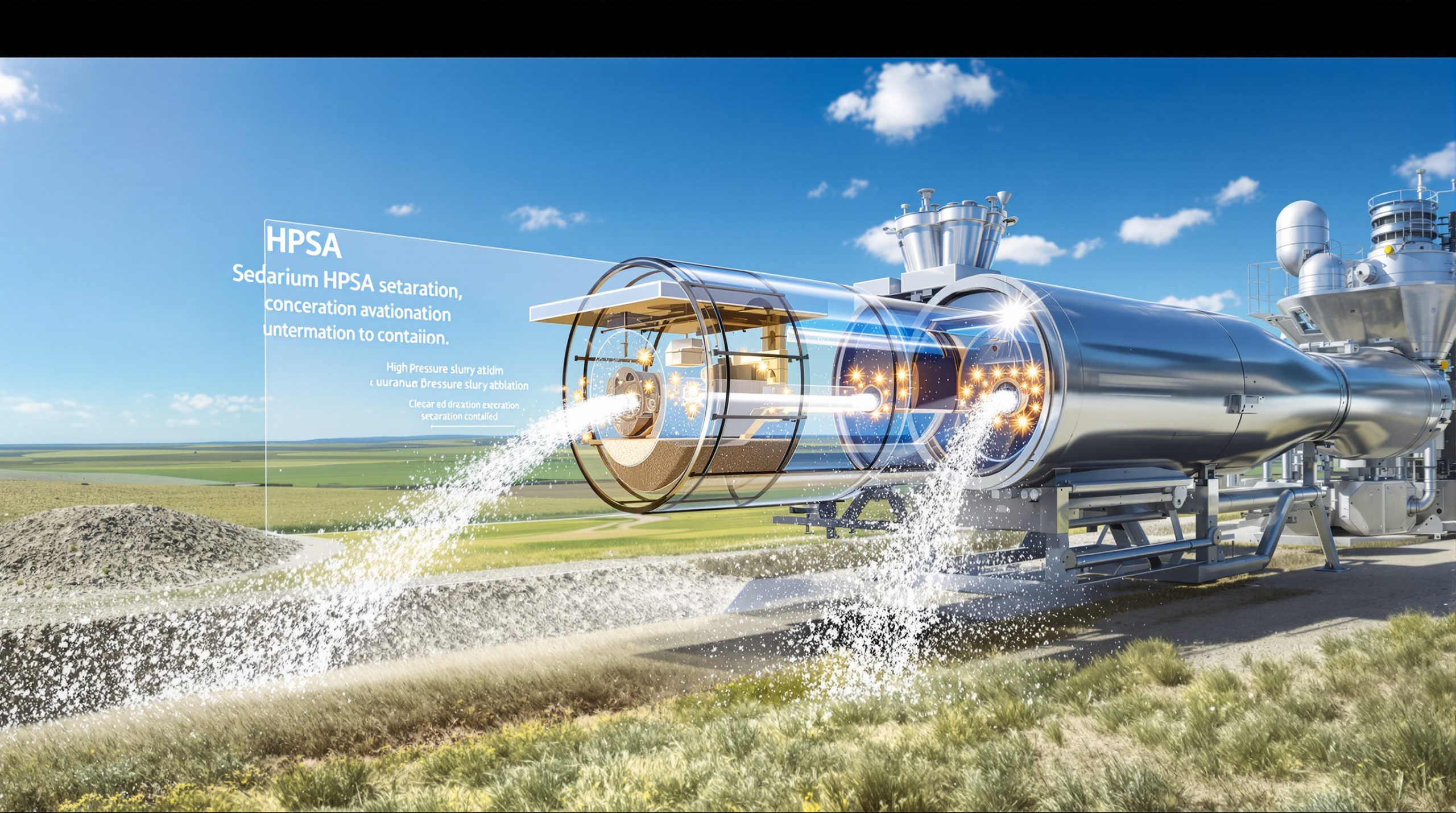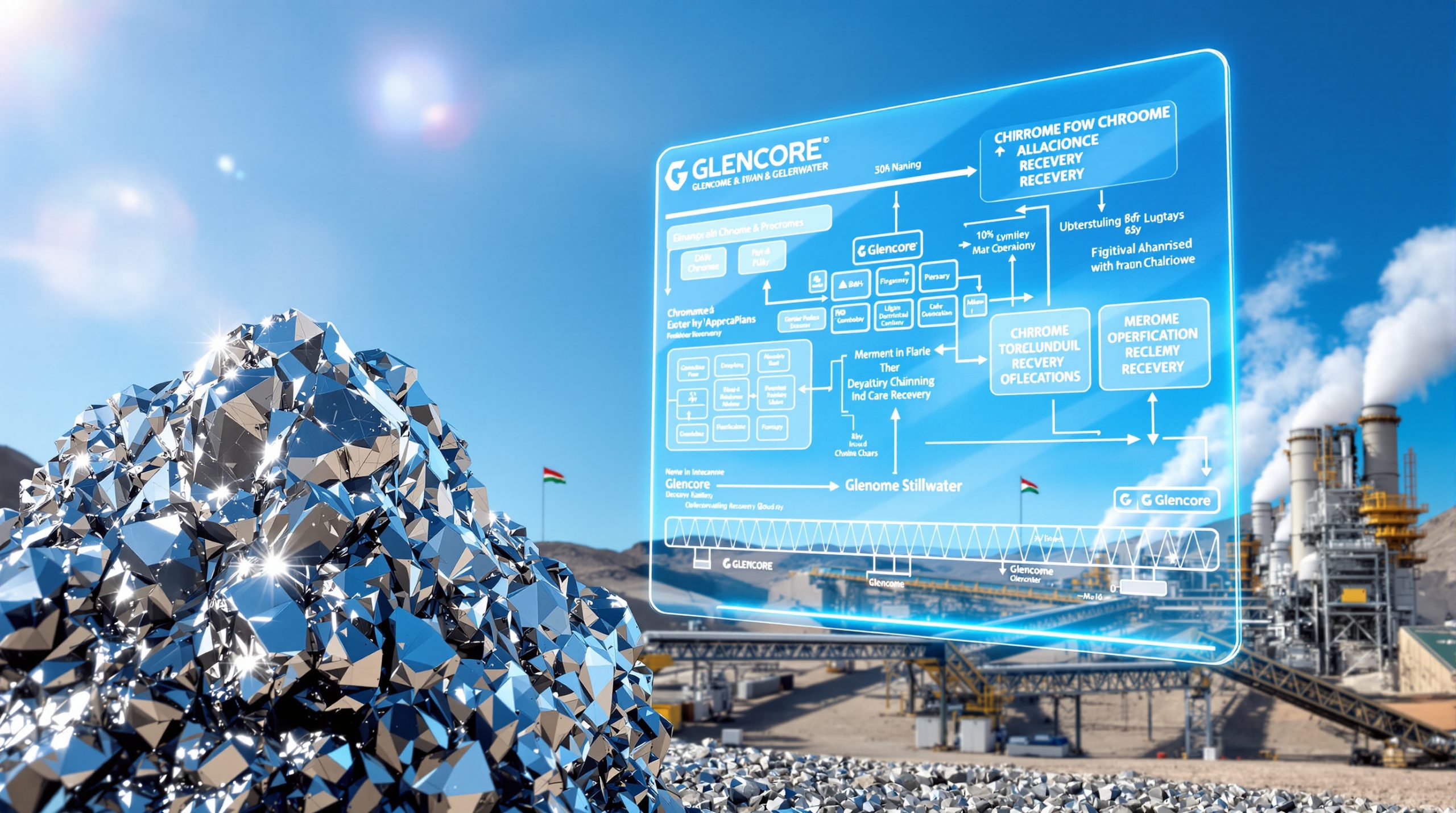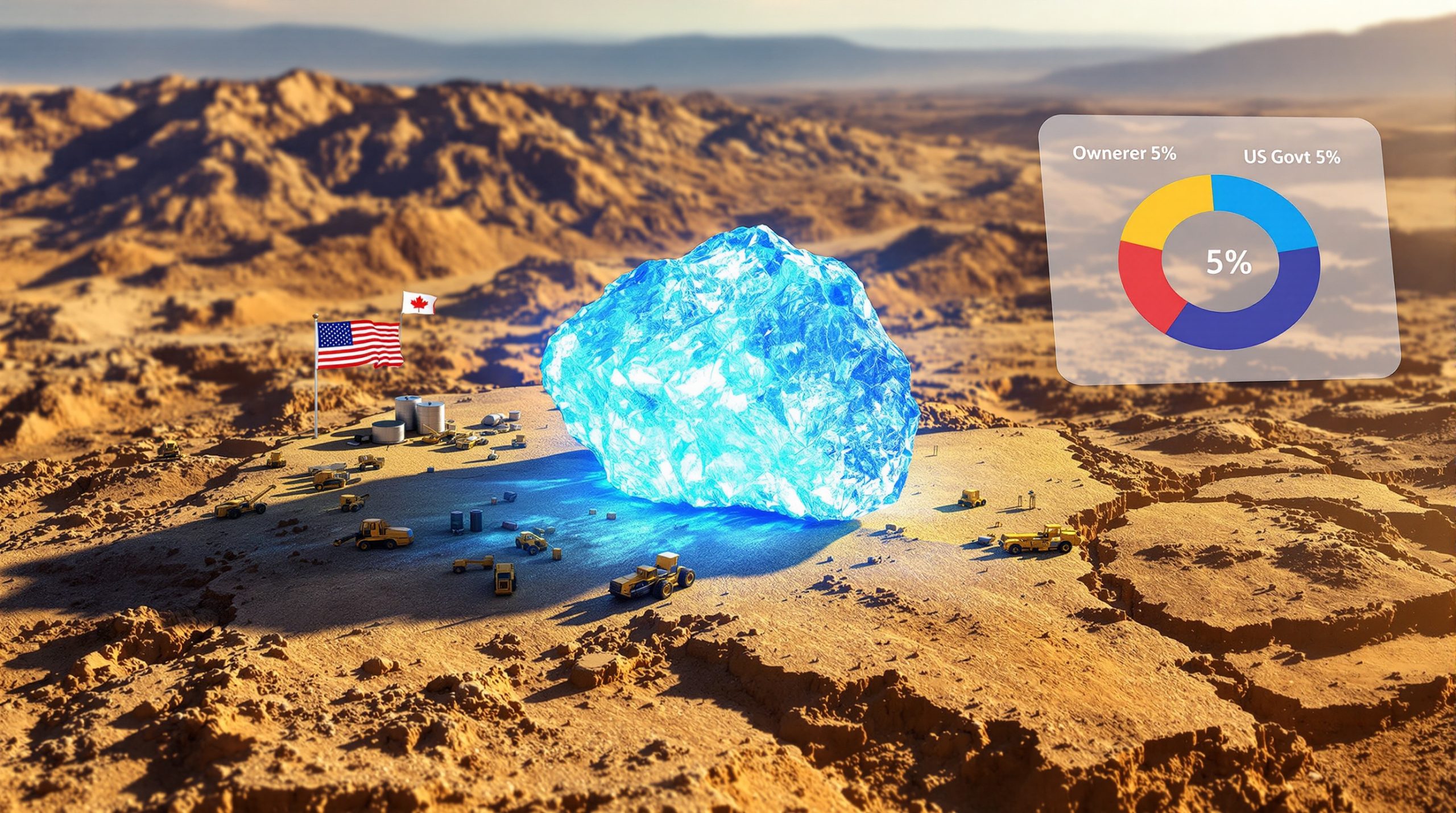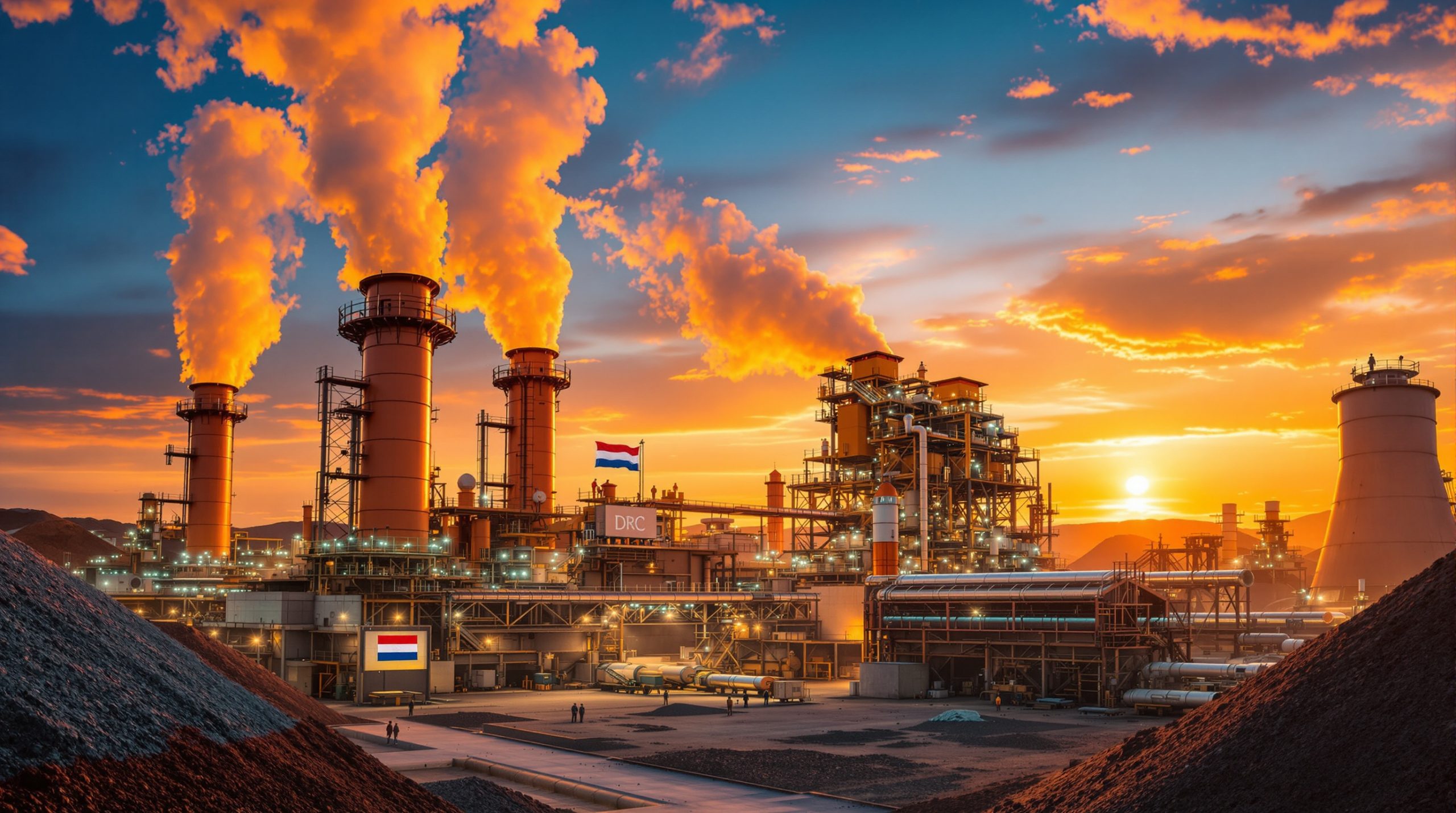What is High-Pressure Slurry Ablation (HPSA) Technology?
High-Pressure Slurry Ablation represents a groundbreaking advancement in environmental remediation technology, particularly for addressing the significant challenge of uranium mine waste. This innovative process works by mechanically separating mineral-rich patinas containing uranium and thorium from host sand grains through a controlled collision process in slurry form.
The technology creates two distinct output streams during processing: a coarse, sand-like material that potentially meets standards for reintegration into remediation sites, and concentrated fines containing uranium, thorium, and other metals for proper disposal or recovery. This separation mechanism allows for significant volume reduction of contaminated materials requiring specialized handling.
Unlike traditional remediation methods that rely heavily on chemical treatments or extensive excavation, HPSA offers a more efficient mechanical approach to processing and separating contaminated materials. The technology has been validated by multiple regulatory agencies, including the U.S. Environmental Protection Agency, the Navajo Nation EPA, and Idaho National Laboratory.
How Does HPSA Technology Transform Mine Waste Remediation?
The HPSA process utilizes controlled pressure and mechanical forces to separate materials based on their physical properties without introducing additional chemicals into the environment. This represents an environmentally conscious approach to remediation that minimizes secondary impacts while achieving effective separation of contaminants.
The technology works by creating a slurry of the contaminated material and subjecting it to precisely controlled mechanical forces. These forces effectively strip the contaminated surface layers from the underlying sand particles, concentrating the radioactive materials into a smaller volume for proper handling.
What makes HPSA particularly valuable is its ability to address the unique challenges of uranium mine waste, which requires specialized handling due to its radiological properties. By mechanically separating rather than chemically treating the waste, the process avoids introducing additional environmental contaminants while achieving remediation goals.
Why is the NRC License for Disa Technologies Significant?
The Nuclear Regulatory Commission's decision to grant Disa Technologies a license for novel environmental remediation tech marks a significant regulatory milestone in environmental remediation. This approval represents a vote of confidence from one of the nation's most stringent regulatory bodies regarding both the safety and effectiveness of this innovative approach.
Perhaps most notably, the approval process was completed in just six months—a dramatic improvement over the typical 18-24 month timeline for similar applications. This accelerated timeline demonstrates regulatory confidence in the technology's safety profile and recognition of the urgent need for effective uranium mine waste remediation solutions.
The license application, submitted in March 2025, received approval on September 30, 2025, with the NRC completing its review "ahead of its anticipated schedule." This efficiency in regulatory approval suggests a growing recognition of the importance of innovative solutions to address legacy environmental contamination issues.
Phased Implementation Approach
The NRC license establishes a thoughtful, phased approach to implementing this new technology:
-
Initial Demonstration Phase: Authorization to remediate up to 12,000 tons of abandoned uranium mine waste over a 180-day period
-
Expanded Implementation: Pending successful demonstration, a potential license amendment allowing unlimited quantities of source material processing
-
Site-Specific Safety Reviews: Required 90-day advance notifications to the NRC before mobilizing to each remediation site
This structured approach balances innovation with appropriate regulatory oversight, ensuring that safety remains paramount throughout the technology's deployment. The phased implementation also allows for data collection and analysis before expanding to larger-scale operations, providing an evidence-based pathway to broader implementation.
What Environmental Challenges Does HPSA Technology Address?
The Scale of Abandoned Uranium Mine Contamination
The western United States contains an estimated 15,000 abandoned uranium mines, representing a significant environmental and public health challenge. These sites, many dating back to the Cold War era uranium mining halt, continue to pose potential risks through:
- Soil and groundwater contamination
- Dust dispersion of radioactive particles
- Watershed impacts in surrounding communities
- Bioaccumulation in local ecosystems
Many of these abandoned mines are located on or near tribal lands, including the Navajo Nation, where uranium mining has left a complex legacy of environmental and health concerns. The contamination from these sites has disproportionately affected indigenous communities, creating an environmental justice dimension to the remediation challenge.
Regulatory and Environmental Assessment
The NRC's approval process included a comprehensive environmental review that examined potential impacts of implementing this technology:
- A generic environmental assessment evaluated potential environmental effects
- The assessment resulted in a finding of no significant impact (FONSI)
- The evaluation considered various operational scenarios and containment measures
- Results were published in the Federal Register on September 29, 2025
This thorough review process provides confidence that the technology can be deployed safely while achieving meaningful environmental remediation outcomes. The FONSI determination indicates that, when properly implemented, HPSA technology is not expected to create significant additional environmental impacts during remediation operations.
How Does HPSA Technology Compare to Traditional Remediation Methods?
Advantages of Mechanical Separation
Traditional uranium mine waste remediation often involves one of several approaches, each with significant limitations that HPSA technology aims to address:
| Traditional Method | Limitations | HPSA Advantage |
|---|---|---|
| Complete excavation and off-site disposal | Extremely high costs, transportation risks | Reduces volume requiring disposal by separating clean material |
| Capping and containment | Temporary solution requiring ongoing maintenance | Addresses the source material rather than simply containing it |
| Chemical treatment | Introduces additional contaminants, complex chemistry | Avoids introducing additional chemicals into the environment |
| Soil washing | High water usage, complex wastewater treatment | Achieves more efficient separation with optimized process design |
The HPSA approach potentially offers cost and efficiency advantages while reducing the environmental footprint of remediation activities. By focusing on mechanical separation rather than chemical treatment, the technology avoids creating secondary waste streams that would require additional treatment.
Validation by Multiple Agencies
The technology has received validation from several key regulatory and environmental organizations:
- U.S. Environmental Protection Agency
- Navajo Nation Environmental Protection Agency
- Idaho National Laboratory
This multi-agency validation suggests broad recognition of the technology's potential to address long-standing environmental challenges. The involvement of tribal environmental authorities is particularly significant, given the disproportionate impact of uranium mining on indigenous communities.
What is the Implementation Process for HPSA Technology?
Site Preparation and Mobilization
Before remediation begins at a specific site, several preparatory steps must occur to ensure proper regulatory oversight and operational readiness:
- Site characterization to understand waste composition and volume
- 90-day advance notification to the NRC
- Site-specific safety review by regulatory authorities
- Mobilization of portable HPSA equipment to the site
This mobile approach allows the technology to be deployed directly at contaminated sites, reducing transportation requirements and associated risks. The portability of the equipment is a key advantage, allowing for treatment at remote locations where transportation of large volumes of waste would be logistically challenging and potentially hazardous.
Post-Remediation Protocols
After completing remediation activities, Disa Technologies must follow specific protocols to ensure proper closure and documentation:
- Submit a demobilization notification to the NRC within 30 days
- Demonstrate that remaining materials meet unrestricted release criteria
- Ensure the site meets all applicable regulatory requirements
- Leave the site in a condition suitable for future use
These requirements ensure accountability and verification that remediation objectives have been achieved. The "unrestricted release" standard means that sites must meet NRC requirements for residual radioactivity, including specific limits that would result in a total effective dose equivalent not exceeding 25 mrem per year to an average member of the critical group.
What Are the Broader Implications of This Technology?
Potential for Widespread Application
The approval of HPSA technology opens possibilities for addressing similar environmental challenges beyond uranium mine waste. The mechanical separation principles could potentially be adapted for:
- Other types of mining waste remediation
- Contaminated soil processing
- Industrial site cleanup operations
- Recovery of valuable materials from waste streams
The technology's scalability and mobile deployment capabilities make it particularly valuable for addressing distributed environmental contamination across multiple sites. This flexibility could provide remediation options for a variety of contaminated sites that currently lack cost-effective treatment solutions.
Economic and Social Benefits
Effective remediation of abandoned uranium mines offers several potential benefits beyond environmental protection:
- Restoration of land for productive use
- Reduction of public health risks in affected communities
- Employment opportunities in remediation activities
- Potential recovery of valuable materials from waste
- Addressing environmental justice concerns in disproportionately affected communities
These benefits extend beyond environmental protection to include economic and social dimensions of sustainability transformation. The technology could help transform environmental liabilities into assets while addressing long-standing community health concerns.
How Does This Technology Fit Within the Broader Environmental Remediation Landscape?
Emerging Trends in Remediation Technology
The approval of HPSA technology reflects broader trends in environmental remediation that are reshaping how we approach legacy contamination:
- Increased focus on in-situ treatments: Technologies that can be deployed on-site rather than requiring excavation and transportation
- Resource recovery: Approaches that view contaminated materials as potential resources rather than simply waste
- Minimizing secondary impacts: Technologies designed to remediate without creating new environmental challenges
- Regulatory innovation: Streamlined approval processes for technologies with demonstrated safety profiles
These trends suggest a more sophisticated, nuanced approach to environmental remediation that balances effectiveness, efficiency, and sustainability. HPSA technology aligns with these trends, offering an innovative solution that addresses multiple aspects of modern remediation challenges.
Integration with Comprehensive Remediation Strategies
HPSA technology represents one component of what must be comprehensive approaches to addressing legacy contamination. Effective remediation strategies typically include:
- Thorough site characterization
- Community engagement and participation
- Long-term monitoring programs
- Integration of multiple treatment technologies
- Sustainable end-use planning
The most successful remediation efforts combine innovative technologies with thoughtful mine reclamation innovation and stakeholder involvement. HPSA technology can be a valuable tool within this broader framework, particularly for addressing the specific challenges of uranium mine waste.
What Questions Remain About HPSA Technology?
Long-Term Performance Monitoring
As with any new environmental technology, questions remain about long-term performance that will require ongoing assessment:
- How will the technology perform across diverse geological conditions?
- What is the expected lifespan of remediated sites?
- What monitoring protocols will ensure continued protection?
- How will performance be verified across different mine waste compositions?
The phased implementation approach established by the NRC will help address these questions through data collection and analysis during the initial demonstration phase. This evidence-based approach will provide valuable insights into real-world performance under varying conditions.
Scaling Considerations
Additional questions relate to scaling the technology to address the vast number of contaminated sites:
- What throughput rates can be achieved at full operational capacity?
- How many sites can be remediated simultaneously?
- What are the limiting factors for deployment?
- What is the cost-effectiveness at different scales of operation?
As the technology moves from demonstration to full implementation, these operational questions will be addressed through practical experience and performance data. The potential for scaling will be a critical factor in determining the technology's ultimate impact on the abandoned uranium mine waste challenge.
FAQ: Understanding HPSA Technology and Environmental Remediation
What happens to the concentrated waste material after processing?
The fines concentrates containing uranium, thorium, and other metals will be transported to a licensed low-level radioactive waste disposal facility, storage facility, or uranium recovery facility, depending on composition and regulatory requirements. These specialized facilities are designed to safely contain radioactive materials for the long term.
How does the NRC ensure ongoing safety during remediation operations?
The NRC requires 90-day advance notification before mobilization to each site, conducts site-specific safety reviews, and requires demobilization notifications after remediation is complete. This creates multiple checkpoints for regulatory oversight throughout the remediation process.
Can this technology be used for other types of contamination?
While specifically licensed for uranium mine waste, the mechanical separation principles could potentially be adapted for other types of contamination, subject to appropriate regulatory approvals and technology modifications. The underlying physical processes could have broader applications in environmental remediation.
How does HPSA technology impact local communities?
The technology aims to reduce environmental and health risks by removing radioactive materials from abandoned mine sites. The mobile nature of the equipment minimizes transportation impacts, and successful remediation can restore land for community use, potentially providing both health and economic benefits.
What criteria determine if the remediated site is safe for unrestricted use?
Sites must meet NRC requirements for unrestricted release, which include specific limits on residual radioactivity that would result in a total effective dose equivalent not exceeding 25 mrem per year to an average member of the critical group. These standards ensure long-term protection of public health.
Further Exploration
Readers interested in learning more about environmental remediation technologies and regulatory processes can explore related educational content from the American Nuclear Society, which provides updates on nuclear regulatory matters and environmental remediation approaches through their Nuclear Newswire publication.
The NRC's approval of Disa Technologies' innovative HPSA technology represents a significant step forward in addressing the environmental legacy of uranium mining in the western United States. By combining mechanical efficiency with modern mine planning and regulatory rigor, this approach offers promise for transforming environmental liabilities into safer, more productive landscapes while providing valuable mineral beneficiation insights for the broader mining industry.
Looking for the Next Mineral Discovery Breakthrough?
Discovery Alert's proprietary Discovery IQ model instantly identifies significant ASX mineral discoveries, transforming complex data into actionable investment insights. Visit the Discovery Alert discoveries page to understand how major mineral discoveries can lead to exceptional market returns and start your 30-day free trial today.
